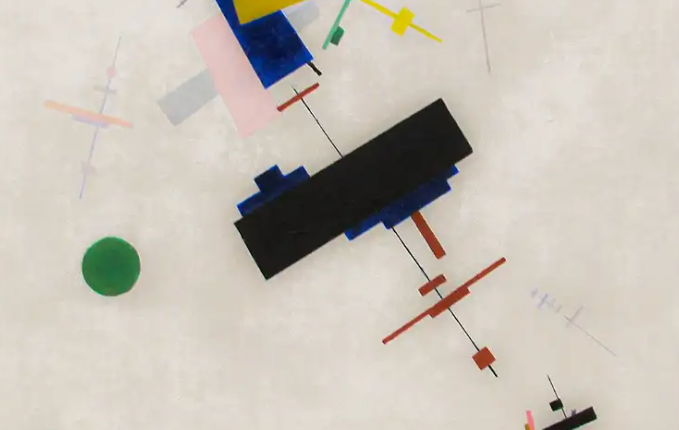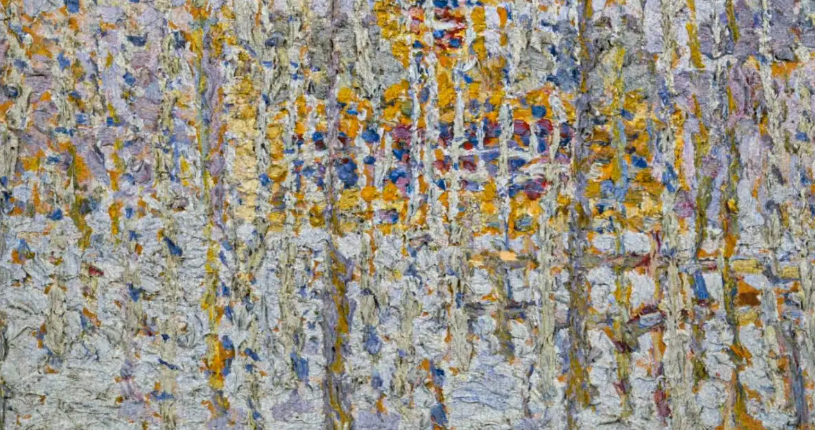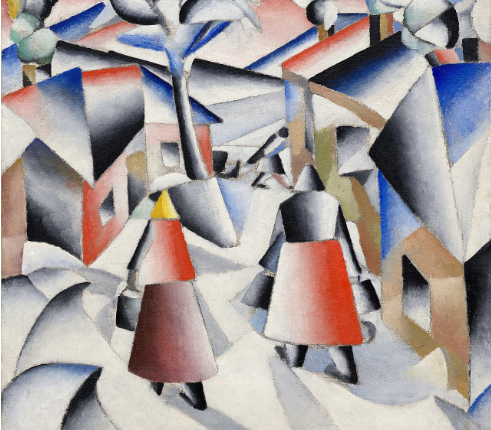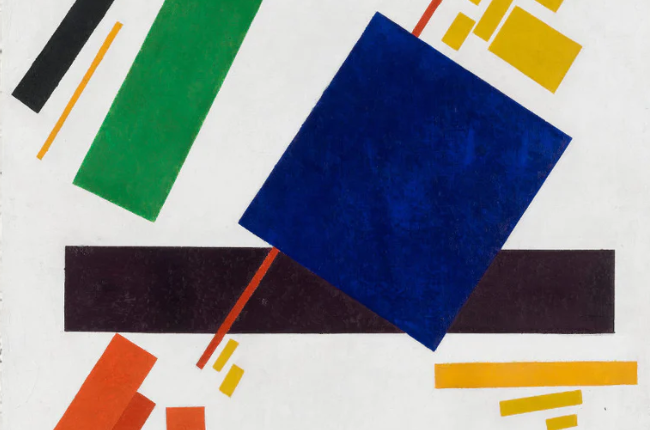Abstract Art Artists: Kazimir Malevich
Abstract artwork by Kazimir Malevich
About Kazimir Malevich
Kazimir Malevich (1879-1935) was a pioneering Russian artist and a key figure in the development of abstract art during the early 20th century. Born in Kiev, Ukraine, Malevich belonged to a time of immense cultural and political change in Russia.
Malevich’s early works were influenced by various art movements, including Impressionism and Symbolism. However, he eventually moved away from these styles and embraced the avant-garde movements that were gaining momentum in Europe. Malevich became associated with Suprematism, a movement he founded in 1915. Suprematism was characterized by the use of basic geometric shapes, particularly the square, rectangle, and circle, to create non-representational and abstract compositions.
One of Malevich’s most famous works is his painting “Black Square” (1915), which is considered a landmark in the history of abstract art. This simple black square on a white background represented a departure from representational art and sought to evoke pure feeling and emotion rather than depict recognizable objects. The “Black Square” became an iconic symbol of the Suprematist movement.
Malevich’s ideas went beyond visual art; he also wrote extensively about the theoretical underpinnings of his artistic philosophy. In his manifesto “From Cubism to Suprematism” (1915), he outlined his thoughts on the evolution of art and the importance of non-objective, abstract forms in expressing the spiritual and cosmic aspects of human experience.
The Russian Revolution of 1917 had a profound impact on Malevich and other artists of the time. Initially, the avant-garde enjoyed a degree of support from the Bolshevik government, but by the mid-1920s, the political climate changed, and the state began to enforce a more restrictive approach to art. Socialist Realism, which emphasized realistic and politically charged representations, became the officially endorsed style, and avant-garde movements faced suppression.
Malevich continued to produce art throughout his life, but his later works often had to conform to the state-approved style. He faced persecution and was even arrested for a brief period. Malevich died in 1935, but his legacy lived on as a significant influence on subsequent generations of artists, particularly in the development of abstract and geometric art.
Kazimir Malevich’s contributions to the art world extend beyond his paintings; his theoretical writings and pioneering spirit played a crucial role in shaping the course of modern art and paved the way for future movements exploring the boundaries of visual expression.
Briefly about Kazimir Malevich
- Early Life and Background:
– Born on February 23, 1879, in Kiev, Ukraine.
– Witnessed significant cultural and political changes in Russia during the early 20th century. - Artistic Influences:
– Initially influenced by Impressionism and Symbolism.
– Evolved to embrace avant-garde movements gaining momentum in Europe. - Suprematism Movement:
– Founded Suprematism in 1915.
– Emphasized the use of basic geometric shapes, particularly the square, rectangle, and circle.
– Sought to create non-representational and abstract compositions. - Iconic Artwork:
– “Black Square” (1915) is one of Malevich’s most famous works.
– Symbolizes a departure from representational art, focusing on evoking pure feeling and emotion. - Theoretical Contributions:
– Wrote extensively about the theoretical underpinnings of his artistic philosophy.
– Manifesto “From Cubism to Suprematism” (1915) outlines the evolution of art and the importance of abstract forms. - Political Climate and Suppression:
– Russian Revolution of 1917 initially supported the avant-garde.
– By the mid-1920s, the government enforced Socialist Realism, suppressing avant-garde movements.
– Malevich faced persecution, including arrest, due to his art. - Legacy:
– Continued to produce art under state-approved styles.
– Died on May 15, 1935.
– Legacy includes a significant influence on subsequent generations of artists, particularly in the development of abstract and geometric art.
Read more about Kazimir Malevich on Wikipedia.





